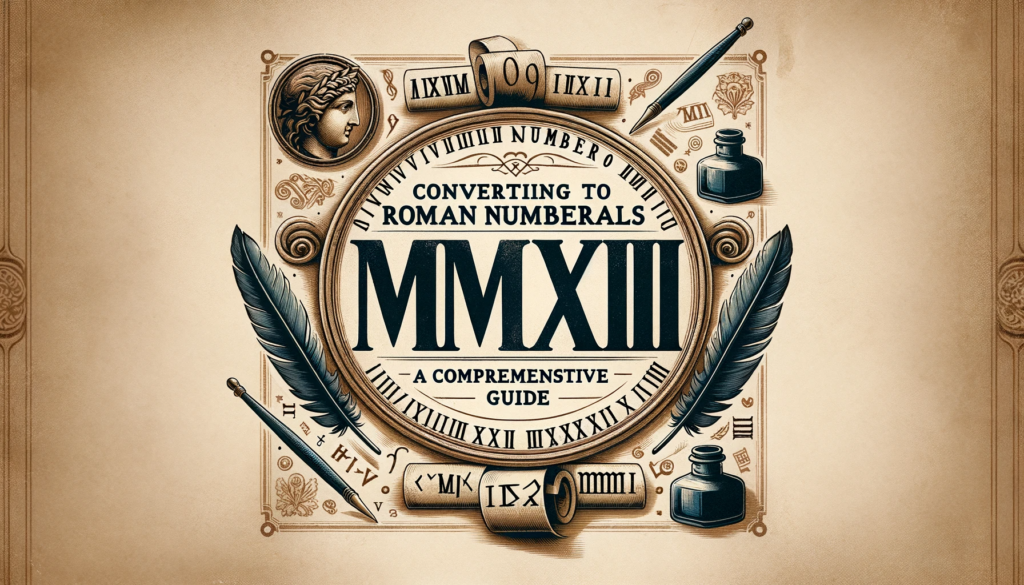How to Convert a Number to Roman Numerals: A Step-by-Step Guide
Welcome to our comprehensive tutorial on converting numbers into Roman numerals. If you’ve ever wondered how to make this conversion efficiently, you’re in the right place. Throughout this guide, we’ll dive deep into the process, ensuring you leave with a clear understanding.
Introduction
The art of converting numbers to Roman numerals has been practiced for centuries. Whether it’s for aesthetic, historical, or educational purposes, understanding the method behind this conversion is both fascinating and practical. Let’s get started on this mathematical journey.
Understanding Roman Numerals
Before diving into the conversion, it’s crucial to familiarize oneself with the basic Roman numeral characters: I, V, X, L, C, D, and M. Each of these symbols represents a unique number, and when combined in specific patterns, they can represent any number you desire.
The Conversion Process
While a detailed algorithm can be used to make the conversion, here’s a simple, illustrative Python function that does the job:
def number_to_roman(input_num):
val = [
1000, 900, 500, 400,
100, 90, 50, 40,
10, 9, 5, 4,
1
]
syb = [
"M", "CM", "D", "CD",
"C", "XC", "L", "XL",
"X", "IX", "V", "IV",
"I"
]
roman_num = ''
i = 0
while input_num > 0:
for _ in range(input_num // val[i]):
roman_num += syb[i]
input_num -= val[i]
i += 1
return roman_num
This function accepts a number as its argument and returns its Roman numeral equivalent. For instance, calling number_to_roman(2023) would return “MMXXIII”.
“Learning to convert numbers Roman numerals can be a delightful dive into the world of ancient mathematics. This process connects us to a time when these numerals were the standard for commerce, architecture, and education. The Roman numeral system’s subtraction principle, where numbers like ‘IV’ represent ‘4’, is particularly intriguing, showing a different way of thinking about numbers. Converting numbers Roman numerals also helps enhance cognitive skills such as pattern recognition and addition. In coding, it’s a common exercise to convert numbers Roman numerals, as seen in the Python function above, which is both practical for understanding computer logic and engaging with historical numeric systems.”
Conclusion
Converting numbers to Roman numerals doesn’t have to be a complex task. With the right understanding and tools, you can seamlessly make the conversion. We hope this guide has provided valuable insights into the process.
If you have questions or need additional technical assistance, don’t hesitate to contact us. Our expert team is ready to assist you, ensuring you get the best out of your endeavors.






